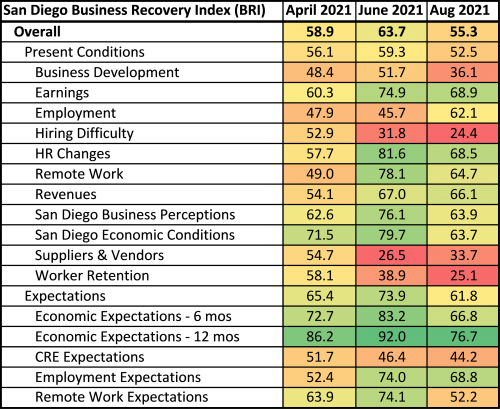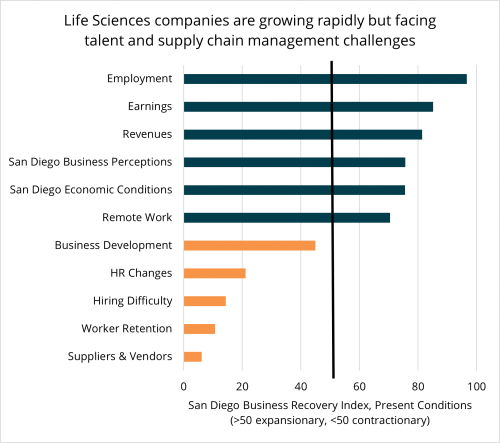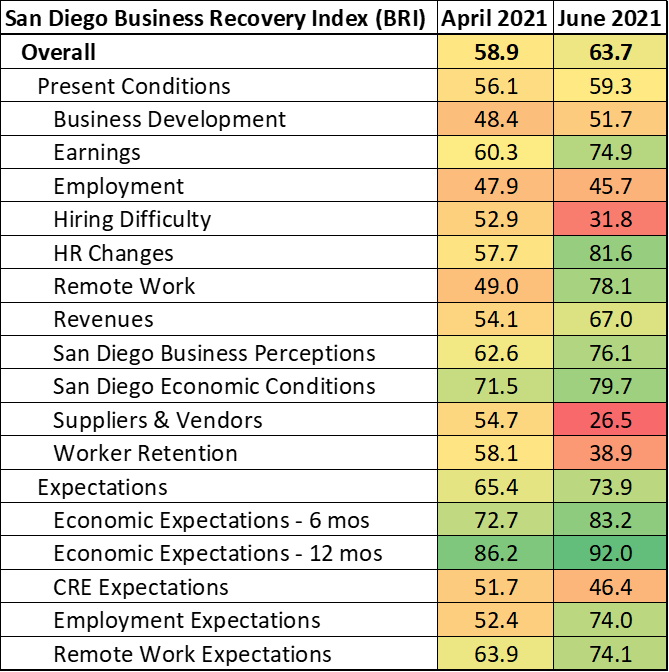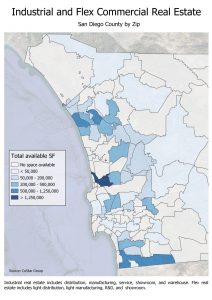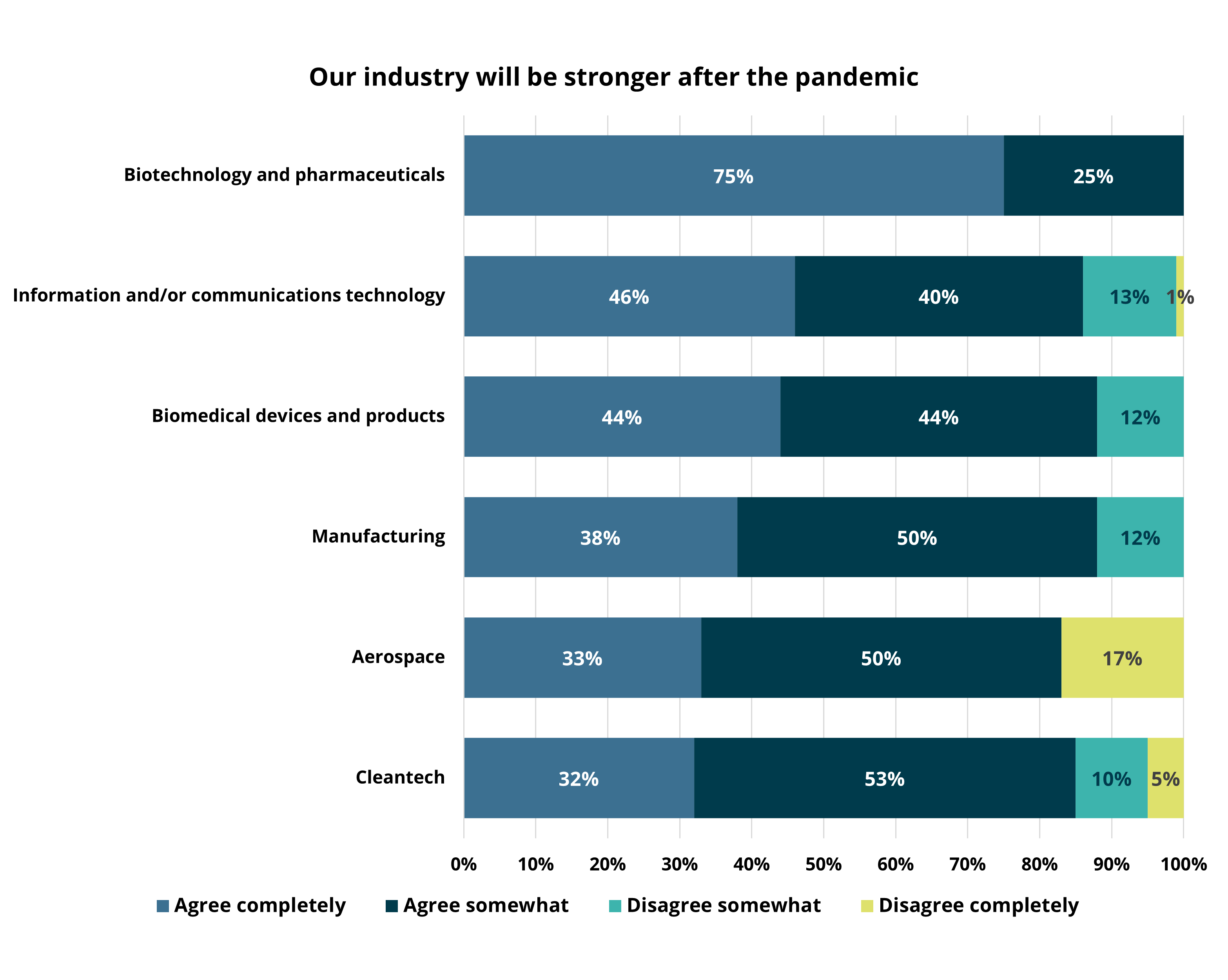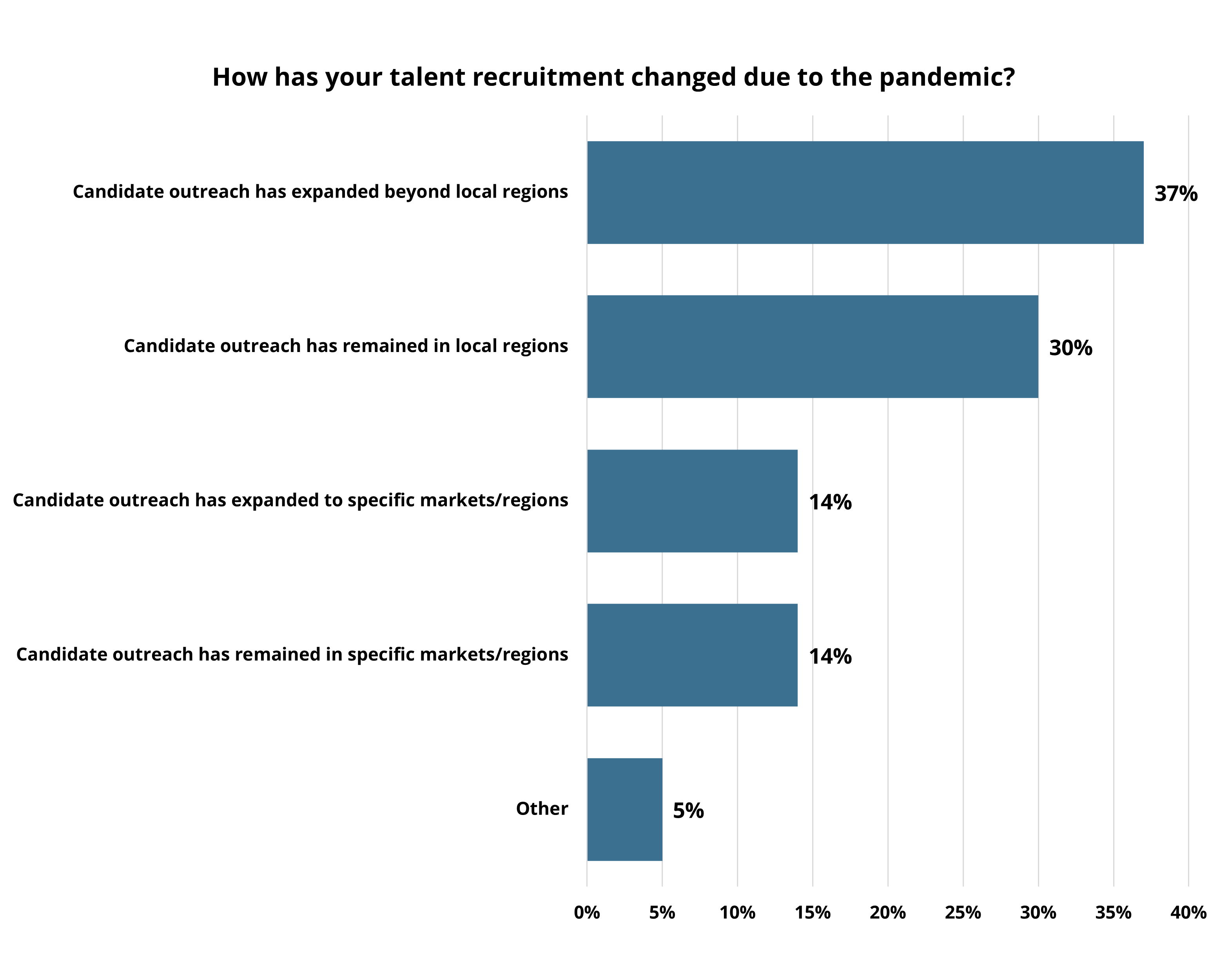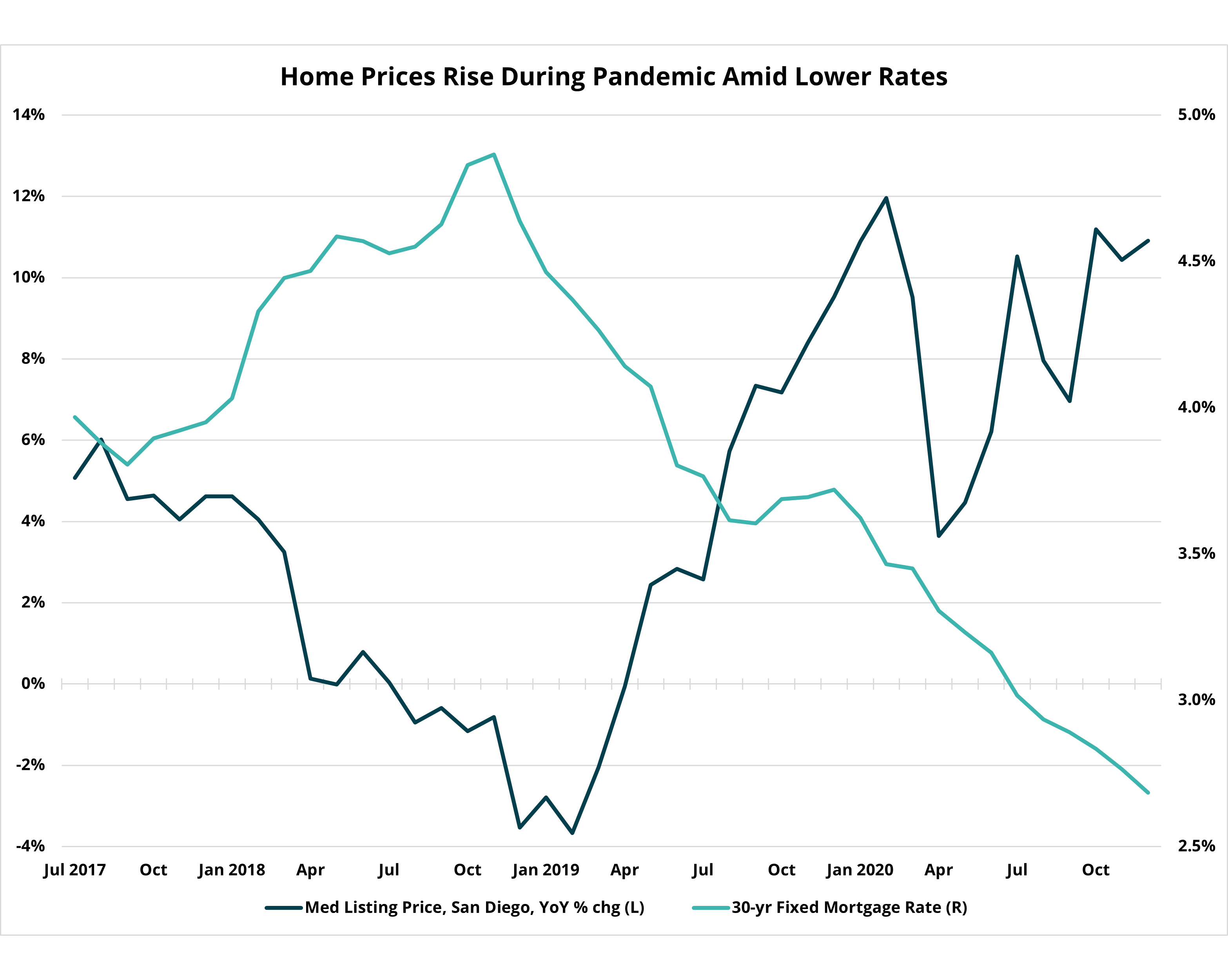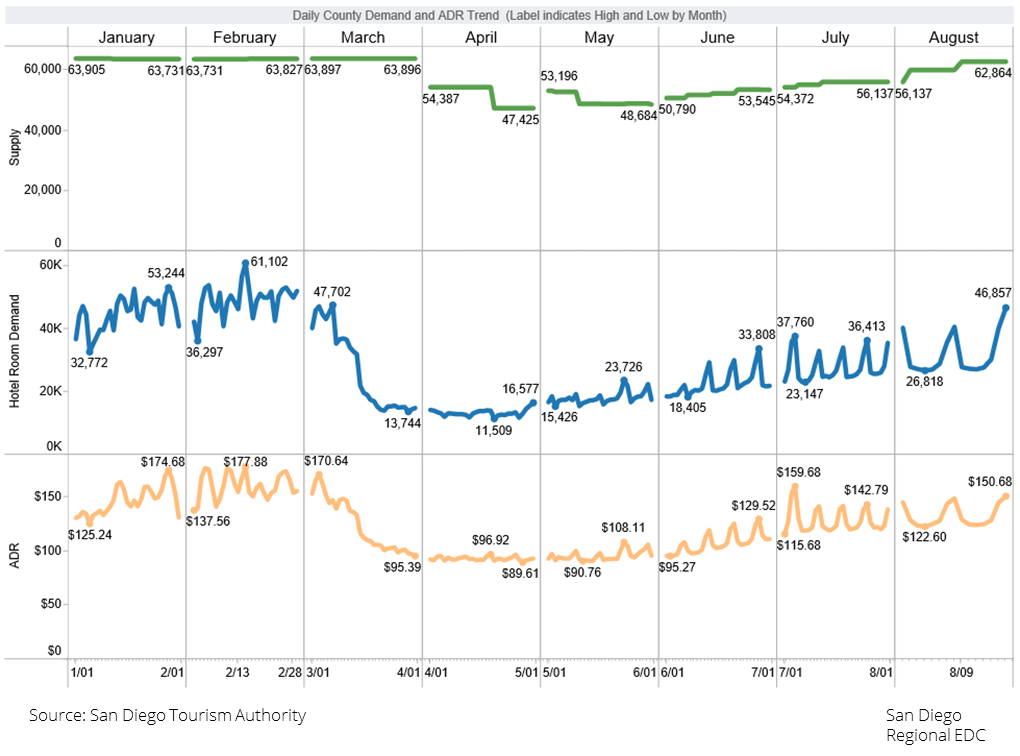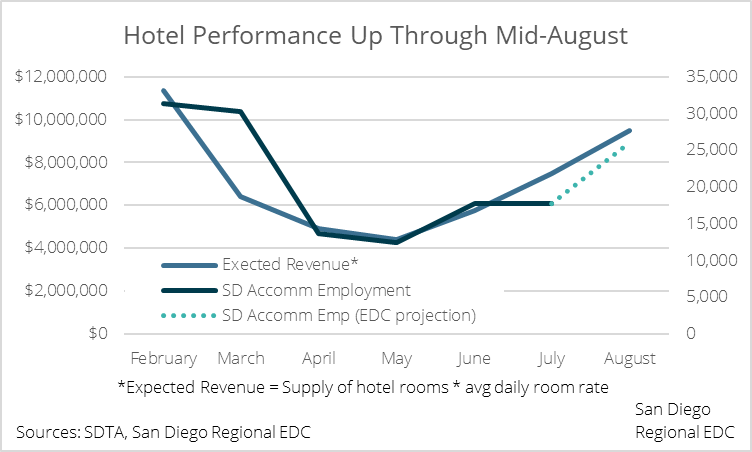Rain or shine, Good News of the Week hit your inbox every Friday afternoon this year, offering a fresh dose of positivity as you headed off into each weekend. Sifting through the noise, EDC delivers more than 45 editions annually filled with San Diego stories worth celebrating. Below, we round up the top stories of 2024–and look forward to curating more Good News with you in 2025.
See what San Diego accomplished in Good News of the Year:
Growing and planting roots in San Diego
In 2024, on-trend with San Diego’s global reputation, the region welcomed newcomers and celebrated the growth of locals in life sciences, technology, and more. Some highlights include:
- Alexandria Real Estate Equities, Inc. partners with Eli Lilly on Gateway Labs at One Alexandria Square
- Breakthrough Properties unveils fully-leased Torrey Pines campus with BD, Pfizer as tenants
- Deloitte expands San Diego presence into Liberty Station
- U.S. General Services Administration completes $134M Otay Mesa Port of Entry modernization and expansion
- Iambic Therapeutics relocates from La Jolla into new 12K sq. ft. Sorrento Valley HQ
- Crinetics Pharmaceuticals expands into new Sorrento Valley HQ, adds 100 employees
- Maravai LifeSciences company TriLink BioTechnologies opens 32K sq. ft. mRNA manufacturing facility in Sorrento Valley
- LA-based social media giant Snap Inc. to open satellite office in Del Mar
Major acquisitions and IPOs
Year after year, San Diego proves to be a birthplace of innovation and R&D that catches the eyes–and investments–of firms around the world. Here are some of our region’s standout acquisitions and IPOs in 2024:
- Bristol Myers Squibb acquires RayzeBio for striking $4.1B
- San Diego genomics giant Illumina acquires Fluent BioSciences for $85M
- WD-40 Company acquires Brazilian distributor Theron Marketing for $6.9M
- French pharma leader Sanofi acquires Torrey Pines Inhibrx for $2.2B
- Johnson & Johnson acquires La Jolla-based Ambrx Biopharma for $2B
- Nerio Therapeutics acquires German drugmaker for $1.3B
- Japan’s Takeda inks $1.2B deal with San Diego’s Kumquat Biosciences
- Swiss drugmaker Novartis acquires San Diego-based Kate Therapeutics for $1.1B
- Swiss pharma giant Roche acquires Poseida Therapeutics for $1.5B
- Torrey Pines-based Avidity Biosciences raises $461M IPO
- Boundless Bio goes public with $100M IPO
VC on the rise (again)
Ranked a #5 ecosystem for venture capital in the U.S., San Diego startups secured more than $4.37 billion in the first three quarters, up $270 million from 2023, with more to come by year’s end. Top raises include:
- Qualcomm, Intuit Ventures invest in AI startup Anthropic
- Eli Lilly announces $1B partnership with Switzerland and San Diego-based HAYA Therapeutics
- Dexcom announces OURA partnership, $75M Series D
- Carlsbad’s Vuori secures $825M in funding, reaches $5.5B valuation
- Candid Therapeutics debuts with second largest biotech raise at $370M
- Element Biosciences secures more than $277M Series D
- Del Mar’s Kura Oncology, Japanese pharma group Kyowa Kirin ink $1.16B partnership
- Mirador Therapeutics snags San Diego’s largest Q1 VC deal with $400M raise
Higher ed fuels growth
San Diego is home to renowned educational institutions, community colleges, and training programs preparing our future workforce. Couple that with the #1 inflow of college-educated residents in the nation and we’re a force to be reckoned with. Education wins from 2024 include:
- National University receives $500K VA grant
- San Diego State University ranks #5 best online Master’s in Education program, Top 50 Green Colleges in Princeton Review
- Cal State San Marcos ranks #8 in Top Performers on Social Mobility, begins construction of $126.3M affordable housing, dining project designed by Gensler
- Point Loma Nazarene University, Padres unveil biomechanics lab
- UC San Diego ranks #7 best U.S. public university, approves creation of new Computing, Information, and Data Sciences School
- UC San Diego, University of San Diego stands among Wall Street Journal’s ‘Best Colleges in the U.S.‘
- University of San Diego receives record $75M donation for STEM programs, celebrates 75 years
- MiraCosta College opens $62.1M student services center, earns Golden Watchdog Award
- Southwestern College offers in-state tuition for binational students, establishes courses at CETYS University in Tijuana
A hub for research and innovation
Boasting acclaimed research institutions, brilliant researchers, and life-changing companies, San Diego ranked among the top 10 innovation clusters worldwide. See the region’s top headlines in innovation:
- San Diego’s Dexcom launches first-ever over-the-counter glucose monitor, named top 2024 invention by Time Magazine
- Qualcomm launches Snapdragon X Elite for PC, receives Best of Sensors award
- Curebound announces $2M in grants for cancer research
- UC San Diego secures $1.73B in research awards, ranks #5 public institution for NIH funding
- San Diego State University receives record $230M in research funding
- Insulet’s Omnipod 5 becomes first FDA-approved Type 2 diabetes pump
- ARS Pharma secures first FDA approval for EpiPen alternative nasal spray
San Diego to the world
Once considered a sleepy beach town in the shadow of our California peer metros, it’s now impossible to deny the region’s standing on the global stage. In 2024, wins include:
- SAN, KLM Royal Dutch Airlines announce international air service with direct flights to Amsterdam
- Alaska Airlines to add much-needed nonstop flights between San Diego, Washington, D.C.
- SAN, Porter Airlines begin new nonstop flight to Toronto
- More than 60 San Diegans compete in Paris Summer Olympics, Carlsbad’s TaylorMade Golf players claim gold, silver, bronze
- Viasat expands in-flight internet for Brazil’s largest airline, equips Spain’s defense ministry
San Diego’s defense cluster
Home to the largest concentration of military assets in the world, San Diego’s defense cluster is critical to advancing the nation’s security priorities. In 2024, U.S. defense spending boosted San Diego’s GRP by 12.2 percent and the cluster supported 373,519 jobs. Local industry announcements include:
- General Dynamics NASSCO secures $20.5M Pentagon investment, $6.7B U.S. Navy shipbuilding contract
- Cubic secures $9.7M support services contract from U.S. Navy
- BAE Systems secures $182M, $178M contracts from DOD
- Viasat wins $33M U.S. Air Force contract, $568M DOD contract extension
- Northrop Grumman secures $464.4M communications contract from U.S. Air Force, $170M U.S. Navy contract
- Three San Diego domestic supply businesses earn $5M Pentagon funding
Building a cleaner, greener San Diego
San Diego was proudly named the greenest city in the U.S.—and our employers and anchor institutions made the investments to back it up. Top ‘green’ wins include:
- SDG&E awards $1M in grants to local environmental organizations
- San Diego Foundation, San Diego Community Power, Calpine award more than $1.2M in clean energy project grants
- Port of San Diego zero-emission infrastructure secures $58.6M from U.S. EPA, debuts first all-electric cranes in North America
- SANDAG, Caltrans complete San Dieguito Lagoon wetland restoration
- PCL Construction secures $42.4M contract for wastewater treatment plant rehabilitation
- Balboa Park Botanical Building opens after $26.5M restoration
‘LFGSD’
Ranked the #2 premier destination in the U.S. by Condé Nast, San Diego’s pride in sports, travel, and entertainment outshines even the region’s sunny weather. Fandom in 2024:
- Pandas return to the San Diego Zoo Wildlife Alliance
- Padres sweep Wild-Card series
- Petco Park earns MLB’s most walkable stadium recognition, opens newly renovated Gallagher Square
- San Diego FC prepares for inaugural 2025 season, signs Hirving “Chucky” Lozano among others, announces head coach
- San Diego Wave FC ranks #2 in global women’s soccer attendance
- Oceanside unveils $85M Frontwave Arena
- TwitchCon returns to San Diego Convention Center through 2028
EDC’s 2024 in Review
San Diego’s good news is EDC’s good news. With and through our investors, our year in review includes support to 138 local companies, more than $96 million in new international sales growth since 2015 through WTCSD programs, 28 new Verified Programs of Talent, and much more.
